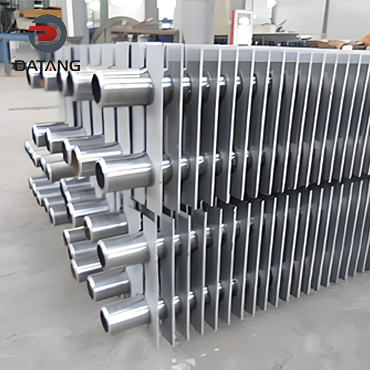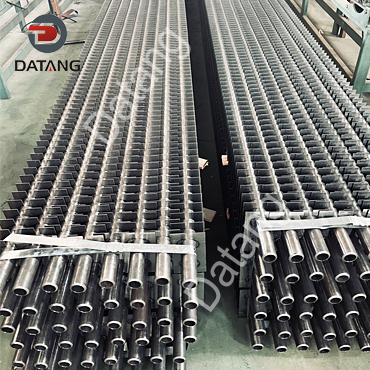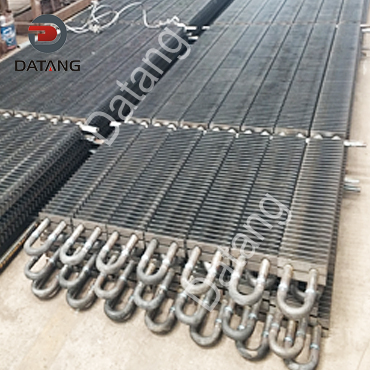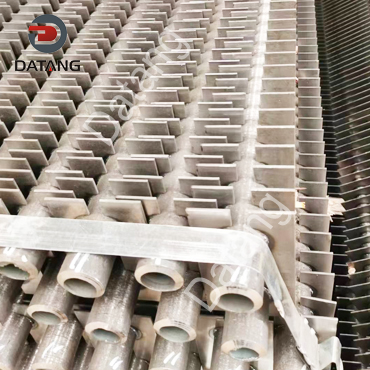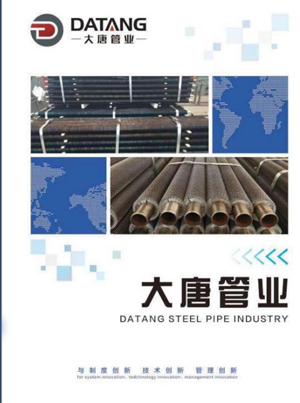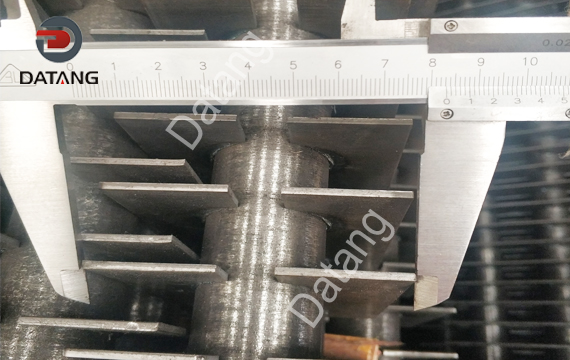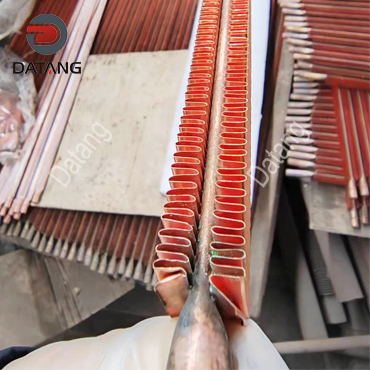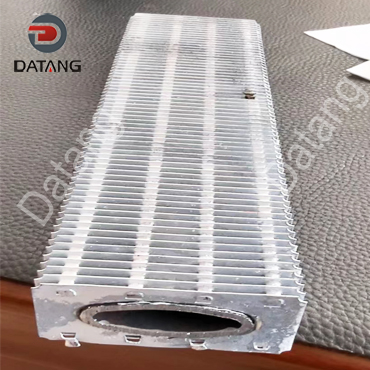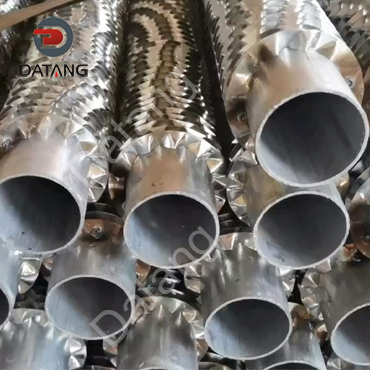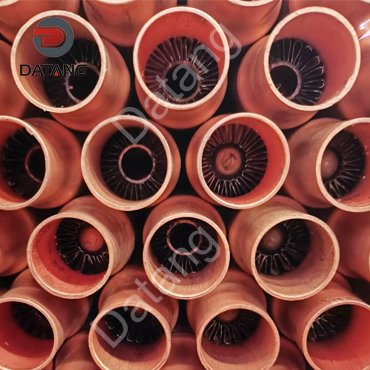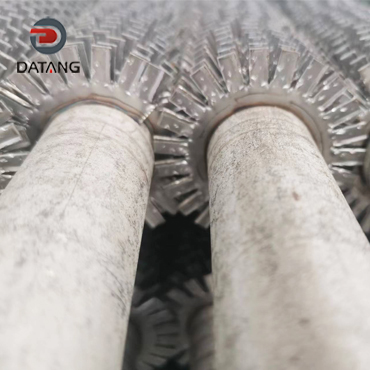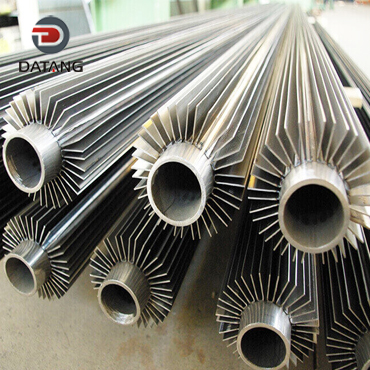H Type Fin Tube :Square Finned Tube
Square finned tubes, also known as H-finned tubes, are enhanced heat exchange elements placed at the tail end of the flue gas system to recover waste heat from exhaust gases in power plant boilers, industrial boilers, industrial kilns, and marine propulsion systems, effectively improving fuel utilization.
- Base Tube Material:
CS (A106, A333, A179, A210, P5, P11, P22)
SS (SS304, SS316, Duplex SS2205, Super Duplex SS32750)
Nickel Alloys (825, Inconel Alloy 625, High chrome high nickle incoloy alloy Monel 400) - Tube OD:25mm-73mm or customized
Product Details
Square finned tubes, also known as H-finned tubes, are enhanced heat exchange elements placed at the tail end of the flue gas system to recover waste heat from exhaust gases in power plant boilers, industrial boilers, industrial kilns, and marine propulsion systems, effectively improving fuel utilization.
Due to the convective heat transfer characteristics of low-temperature flue gas—the heat transfer coefficient from the flue gas to the tube wall is much smaller than the heat transfer coefficient from the tube wall to the steam-water side—it is essential to use an extended heating surface on the flue gas side.
Currently, economizers (also known as boiler economizers) used in boilers include bare tube, spiral fin, cast iron finned tube, and membrane wall tube types. Except for bare tubes, all other types have extended heating surface structures.
The practical disadvantages of welded steel spiral finned tubes are that the extended surface area is limited by the manufacturing process, the spiral fins wrapped around the tube are difficult to clean, and can easily cause dust accumulation and blockage. Furthermore, the flue gas side has high flow resistance, making its application significantly affected by fuel quality. Its advantages include high productivity, fewer manufacturing steps, and high material utilization.
Square fin tubes feature a separate structure for areas prone to ash buildup, overcoming the drawbacks of spiral fin tubes, including ash accumulation, clogging, and gas resistance. They are an improved version of spiral fin tubes.
The fins of square fin tubes are designed as cantilever beams. Under the action of pulsating airflow, the fins vibrate, further facilitating ash removal.
Why are square fin tubes chosen for economizers in thermal power plants?
1. Highly Efficient Heat Transfer
Expanded Surface Area: The unique H-shaped fin design (two fins arranged in parallel, welded together to form an “H” shape) significantly increases the heat transfer area, improving heat transfer efficiency between the flue gas and the working medium (water/steam).
Enhanced Heat Transfer: The H-shaped structure creates more turbulence in the flue gas flow, disrupting the boundary layer, reducing thermal resistance, and thus enhancing heat transfer.
2. Excellent Anti-Dust Accumulation
Anti-Clogging Design: The narrow passages between the H-shaped fins create a “flue corridor,” preventing fly ash particles from settling under the airflow. The welded sections prevent ash from entering the fin gaps, reducing the risk of clogging.
Self-Cleaning: As flue gas passes through at high speeds, the vibration and flushing action between the fins automatically removes some accumulated dust, reducing maintenance frequency.
Double H-shaped fin tubes are also called HH-shaped fin tubes.
3. Wear Resistance and Long Life
Structural Stability: The H-shaped fins’ welding process enhances overall rigidity, making them more wear-resistant than spiral fins. They are particularly suitable for flue gas environments with high ash concentrations.
Material Compatibility: High-temperature and corrosion-resistant alloy steels (such as ND steel or Corten steel) are typically used to extend service life under harsh operating conditions.
4. Low Flow Resistance and Energy Savings
Optimized airflow distribution: The H-shaped arrangement reduces flue gas flow resistance, lowering induced draft fan power consumption while also preventing wear caused by excessive localized flow velocities.
- Datasheet
- Drawing
- Certificates
H-type finned tube material and size:
| Base Tube O.D (mm) | Base Tube Thickness (mm) | Fin Height
(mm) |
Fin Thickness (mm) | Fin Pitch (mm) |
| 25.4 mm ~50.8 mm | 2.5 mm ~5.0 mm | 50 mm ~100 mm | 0.5 mm ~3.0 mm | 5 mm ~ 25.4 mm |
| Base Tube Material | Fin Material | Tube Length (Mtr) | ||
| Carbon Steel ,Alloy Steel ,Stainless Steel, ND steel | Carbon Steel ,Alloy Steel ,Stainless Steel, ND steel | ≤ 15Mtrs | ||
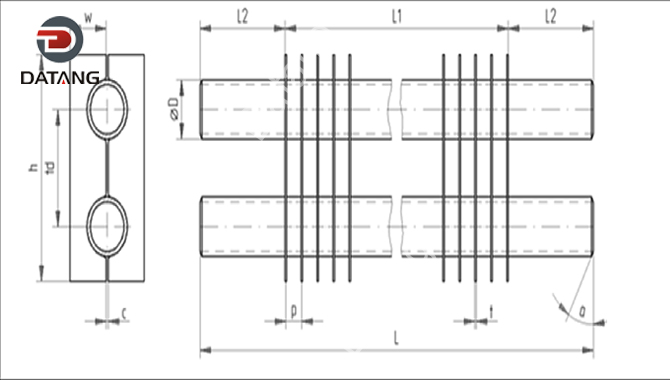

Square Finned Tube Appearance Dimension Inspection
Square finned tube appearance dimension inspection is one of the important links to ensure the quality and performance of fin tubes.
The inspection items mainly include fin height, fin spacing, fin thickness, base tube wall thickness and outer diameter, etc.
Datang Square Finned Tube Water Pressure Testing
The main purpose of the Square Finned Tube hydrostatic test is to verify the strength and sealing performance of the pipeline and ensure that it can operate safely under the design pressure without leakage or structural damage.
Square Finned Tube Strength and Pressure Resistance Testing: By applying water pressure exceeding the design pressure, the material strength and structural stability of the finned tubes are tested to prevent deformation or rupture due to overpressure.
Square Finned Tube Sealing Verification: The sealing properties of pipe joints, welds, and other areas are checked to prevent leakage that could lead to heat transfer loss or environmental contamination.
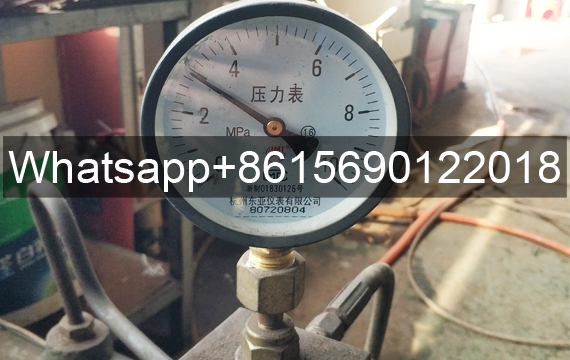
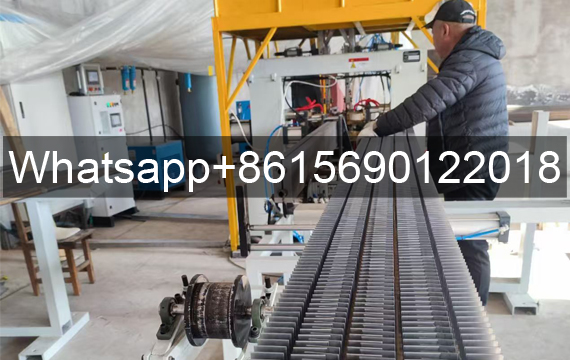
Square Finned Tube Welded Machine
Cangzhou Datang Steel Pipe Co., Ltd has advanced Square Finned Tube Welded Machine, H-type finned tube machine is a special equipment for producing H-type finned tubes.




